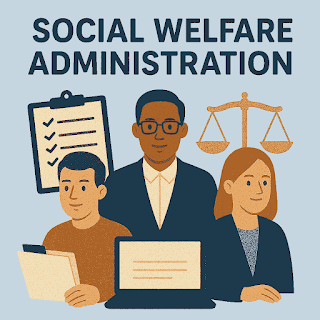Introduction
Administration is a crucial skill, especially for social workers aiming for professional growth and higher organizational roles
(toc) #title=(Table of content)
Understanding Administration
Administration involves cooperative activities within an organization to achieve common goals
- Cooperation: Working together for mutual benefit
. For instance, specialists collaborating on a health policy need to understand and support each other's roles . - Organization: A structured social unit designed to pursue specific objectives
. NGOs and government agencies are examples of organizations . - Goals: The desired outcomes that motivate team members to work together
.
Organizations as Systems
Organizations are viewed as systems with interconnected sub-units working towards a common function
Relationship Between Organization and Administration
Organization provides the structure, while administration is the process within that structure
The POSDCORBEF Framework
The POSDCORB framework, adapted from management theory, outlines the core functions of a manager
Planning
Organizations plan to realize their goals
Organizing
As organizations grow, work is divided to achieve objectives
- Division of labor: Distributing work into smaller units
. - Decentralization: Distributing authority across organizational levels
. - Departmentalization: Structuring the organization into functional, theme-based, location-based, or clientele-based departments
. - Span of control: Limiting the number of subordinates a supervisor manages (ideally five or six)
.
Staffing
This involves recruitment, placement, training, and development of organizational members, also known as human resource planning
Directing
Effective leadership is crucial for guiding an organization
Coordinating
This involves efficiently achieving organizational goals through various methods
- Line of command.
- Rules and regulations
. - Objective identification and plan formulation
. - Committees.
- Horizontal and vertical communication systems
.
Reporting
Keeping superiors informed about work progress and problems is essential
Budgeting
A budget outlines an organization's past and estimated future income and expenditure
Evaluation and Feedback
Evaluating organizational functions and programs is vital
Key Concepts for Better Administration
Rationality
Rational decision-making is crucial
Effectiveness
This measures the extent to which an organization achieves its objectives
Efficiency
This relates to how well an organization uses its resources to produce goods or services
Conclusion
Effective administration is essential for organizations to achieve their goals and deliver services efficiently



